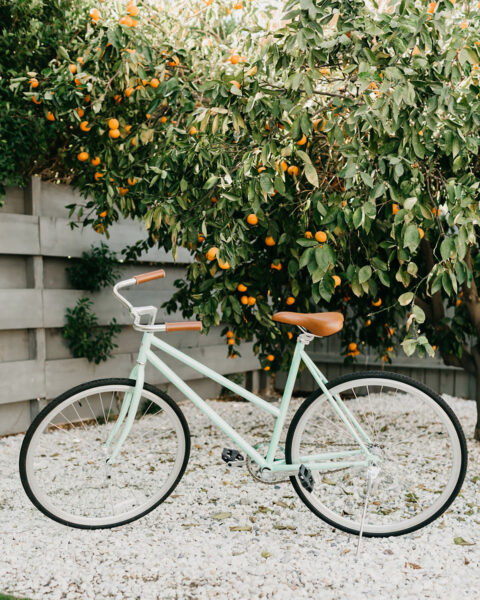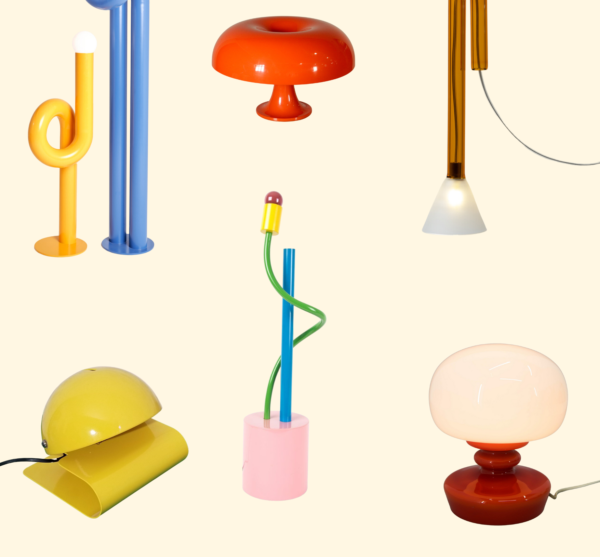
If you are looking to make a change in your home, sign-ups just opened for my free live workshop! We only host this popular offering once a year, so make sure you check our session schedule and save your seat ASAP.
This week, I made a chicken recipe that my household has taken to calling Cozy Chicken. It was described that way in the article where we first found it, sometime in the midst of the pandemic. With its soft-braised chicken thighs nestled among slow-simmered rice and leeks, it feels like a warm blanket on a cold day.
We made it once when my dad visited last year, and on tasting it he attempted to rebrand it “Comfy Chicken.” For some reason, this got my hackles up. I leapt to correct him in a teenaged-sounding huff. “You can call whatever you want, but it’s COZY CHICKEN, DAD.” (Am I really 42?)
Why was the chicken cozy, not comfy? What is cozy, anyway?
What is Cozy?
I’ve been thinking about this because lately, our house has started to feel a lot cozier. This is notable because we’ve often complained that this house doesn’t feel cozy, and have struggled to put a finger on why exactly that is.
For a long time, I blamed the scale of the house. We moved from a snug little cottage, one where we had to whisper in the kitchen to keep from waking the baby, where the smoke detectors accidentally went off if you lit a birthday candle. And before that, a one-bedroom city apartment. Reminiscing about city life, the other day I found myself lamenting the ease of getting a snack while reading a book in bed. It used to be no more than twelve steps from my bed to the refrigerator. Now, there’s a whole staircase involved.
Which doesn’t mean I’m ungrateful.
Believe me, I know what good fortune it is to have my own home office, space for my two year-old to race cars across the floor, and a guest room for the grandparents. But whereas in our previous homes, coziness was built into the architecture. This house, with its generous proportions, can tend to feel a little bit… cold.
My plan was to attack this situation with paint and wallpaper, turning to tools I know well to soften the expanses of white and bring the walls in a little closer. But the reality of life with a toddler means living with work-in-progress feels untenable, and moving out for several weeks isn’t in the cards just yet, leaving these projects on the back burner for the time being. Instead, we’ve focused on the exterior, where we live in our glorious summer months, and on smaller projects like organization.
So it was surprising to find that over the past few weeks, the house has felt distinctly homier than it has since moving in. To what do we owe this newfound coziness?
Defining Cozy
It would help if we get clear on what cozy actually is. Comfort is a part of coziness, but not the whole story. Coziness feels deeper than comfort, not just physical ease, but warmth and intimacy, that shelter us against the harshness of the world outside. (Cozy also seems to have a lot of overlap with the Danish concept of hygge, which I’m not going to get into here, beyond the idea that hygge is also a physical, emotional, and social phenomenon that transcends mere comfort.)
Isabel Gillies, author of Cozy: The Art of Arranging Yourself in the World, describes it this way: “Once you put your finger on what makes you feel solid, supported, and calm, you can arrange yourself in a world that can be cold, awkward, dangerous, inauthentic, and unpredictable.”
Examples of Cozy
That sounds awfully subjective, and yet there are things we all seem to agree are cozy. A well-made bed is cozy, as are hand-knit socks. Certain scents are cozy, like cinnamon and vanilla, a wood-burning fire, or the smell of old books. Cozy can also come from people. Holding hands is cozy. So are cuddles. But you can also be cozy alone, if you’re happy being by yourself. Coziness can be wrapped around you but also imbibed, taken in like a nip of brandy.
To Gilles, there are four themes that define coziness: connection, control, temperature, and organization. Katherine Jezer-Morton, a writer whose work focuses on momfluencers, notes similar themes in the representations of what she calls “cozy season” on social media. “Instagram representations of coziness are primarily about safety and comfort, but they are also about order and control. Everything in its right place. The house is cleaned, the candles lit. No unexpected intrusions can disturb the feeling.”
Jezer-Morton’s piece “Is ‘cozy season’ a cry for help?” speaks to the fundamental tension at the heart of coziness: between a cold, perhaps chaotic world outside, and a safe, warm, orderly one inside. “When people buy candles and fuzzy blankets and try to conjure some of that feeling in their homes, maybe some of them are looking for a feeling that the world outside their homes denies them,” she says.
I wonder if we can see cozy on a spectrum of emotional needs.
Cozy is a low-arousal state cultivated by things that are gentle, familiar, and not overly stimulating. Contrast that with design that is highly stimulating, novel, or challenging — spaces that wake you up with unusual shapes and textures, strong contrasts. Spaces that feel like an adventure. It’s not that people are one type or the other, but that we have different desires at different times. In summer we feel more energetic and open to adventure. In winter, we want a cozy nest. And similarly, when our society and economy feel destabilized, coziness offers a cocoon of protection. Coziness enfolds our vulnerability. It’s not a hard wall but a kind of hazy, soft-focus buffer between us and the hazards outside.
Yet you can’t buy coziness. You can have all the right cozy stuff — the crackle-glazed pottery, the chunky knit blanket, the flannel PJs, the Nigella Lawson stew recipe — and yet the feeling can fail to materialize. As Jezer-Morton writes, “Some people who spend a ton of money making their spaces perfect have no idea how to go about living in their spaces.”
The result is a kind of stage set, where everything looks like it’s supposed to be cozy but leaves you feeling sort of hollow inside. The cognitive dissonance of “conspicuous coziness” often makes a space feel worse than if the occupant hadn’t tried to be cozy at all.
Where does this leave us? I’ll try to sum up. Cozy is:
- A state of warmth and ease that is both physical and emotional
- A sense of being held in a space that is safe, in contrast to danger, cold, or discomfort outside
- Familiar and orderly, but not too perfect
- Marked by closeness, rather than expansiveness; human scale
- Cultivated especially by senses beyond the visual: touch, taste, and smell
But there’s something else too, which I think gets to this distinction between real and faux cozy.
An interesting fact about the history of home is that the idea of physical comfort was a relatively late innovation in the West. The typical home in medieval Europe consisted of one room which served as both a place of work and leisure, where all the activities of daily life took place. Furniture was multipurpose. Chests served as storage and as seats. Beds were for sleeping, but also lounging and entertaining. Comfortable chairs didn’t appear until the eighteenth century in France, and many other innovations of comfort such as temperature control, insulation, ventilation, and artificial lighting didn’t arrive until the nineteenth century.
Intimacy and Privacy
It wasn’t comfort that made the home modern, but a pair of earlier innovations: intimacy and privacy. It may be strange to think of these ideas as “innovations,” given how fundamental they are to modern life, but according to Witold Rybczynski, author of Home: A Short History of an Idea, privacy was virtually nonexistent in the medieval home. Servants and family members usually all slept together in one bed (which, as noted above, was also where guests sat when visiting). Bathing was a communal activity. In some places, toilets even had multiple seats — “for ease of conversation,” notes Bill Bryson in At Home: A Short History of Private Life.
But between the end of the Middle Ages and the seventeenth century, bourgeois families increasingly began to separate their dwellings from their workspaces. Homes were divided into more rooms, including rooms devoted primarily to sleeping. And it became common for servants to sleep in a separate room. Family life also changed during this period. Whereas in the Middle Ages, children were typically sent away by the age of seven (either to apprenticeships or to serve as pages in noble households), in the sixteenth century schooling was extended, and children increasingly stayed home into their teens.
With families now living together longer, separated from outsiders, the home became a locus of intimacy and privacy, a space defined as being for the family. It seems obvious to us now, but it was a huge shift in the consciousness of home and its role in the world. From this point forward, a clear dividing line existed between outside and inside, not just physically, but socially. And within those walls, there was the sense of being held together in a kind of closeness.
Cozy vs Comfort
I think the reason coziness feels deeper than comfort is because it stems from this earlier movement toward intimacy in the home. Coziness is about feeling safe to let your guard down, to wear the tattered sweats you’d never wear out in public, to laugh without worrying if you’re being too loud. It’s about feeling close and feeling held. The things in a home can shape the space for these kinds of interactions, but coziness has an alchemy that you can’t be conjure from material things alone.
An important note here: this doesn’t at all mean you have to live in a traditional family structure to find coziness. Closeness with pets, or the hectic familiarity of college dorm life, or a sense of pleasure in one’s own company all can create the kind of intimacy at the heart of coziness.
To the last point, here is bell hooks with a cozy vision of solitude:
I am a girl who dreams of leisure, always have. Reverie has always been necessary to my existence. I have needed long hours where I am stretched out, wearing silks, satins, and cashmeres, just alone with myself, embraced by the beauty around me. I have always been a girl for fibers, for textiles, and for the feel of comforting cloth against my skin. When I have adorned myself just so, I am ready for the awesome task of just lingering, spending uninterrupted time with my thoughts, dreams, and intense yearnings, often the kind that, like unrequited love, go unfulfilled.
Lately, in the midst of that solitude, I find myself writing, spinning words together in my head so as not to lose or forget the insights, the sharp moments of clarity that come during this quiet time, that surface amid the luxurious smells of expensive French lemon verbena soap and fruity perfume, a book in my hand.
hooks’s downtime routine brings me back to Jezer-Morton’s point that coziness is ultimately about how you live in your home. Which reminds me that in my house, we’ve actually turned coziness into a verb. To coze, in our family, means to get close, to make oneself cozy. When Graham asks for a stuffed animal, he might say, “I wanna coze with Flopsy,” which we all understand means to snuggle. “Coze in” is an invitation to cuddle up. And if the question “What do you want to do this weekend?” is met with “Tbh I just wanna coze,” we know that means watching some movies, perhaps lighting a fire, and not leaving the house unless we absolutely have to.
The true meaning of cozy
Ultimately, I think we have a better chance at true coziness when cozy is something we do, not something we have. Just like love, which needs to be renewed through daily action, coziness is enacted through the fluffing of pillows, the brewing of tea, the gentle folding of sweaters, and the arms, ever-ready to wrap around another in a hug.
I want to loop back to my earlier question about what made our home more cozy, but I’m aware that this post has gone on longer than I ever intended, so I’m going to save that for a part 2. Pop back here next week and I’ll break down the small changes that have surprisingly “cozed up” our home!
Image: Bodies in Urban Spaces, by Willi Dorner
Reminder: Sign ups for the 5 Secrets to Designing a Feelgood Home are now open! Check the schedule for this year’s free live workshop here.
This post may contain affiliate links to products mentioned, which means that if you choose to purchase a book or item linked here, we receive a small percentage of the proceeds. These links help offset a portion of the cost of running this website. There is absolutely no pressure or obligation to purchase. We only reference books or items that we have specifically chosen out of personal interest, or interest to our readers. There are no paid or sponsored links in any of our posts.





Discussion (2 Comments)
Anxiously awaiting the next post… I like the word “coze.”
While everyone has different styles I think of a few house related things when I think of cozy.
– Comfortable (comfortable seating, soft materials, thick rugs, perfect temperature, or slightly under so you bundle up.)
– Human scale, which you mentioned. So many homes have been built with ceilings that are too high and rooms that are too big, and they are very hard to make cozy.
– Lack of clutter. Appropriate storage so there’s not “stuff” lying around distracting your brain. But also, people buy a lot of small things to try to fill up these big spaces, when a smaller number of large things would work better and feel more peaceful.
– A place of one’s own. While I still like an open main floor plan, I think smaller scaled ones are better, opting instead to use the square footage for independent spaces where people can get away from each other and exercise creativity. Art studios and music rooms and hobby rooms and libraries and yoga studios/gyms. I mean how often do we really have big parties and need a lot of seating?
This is great! I’ve been looking forward to your reflections on coziness since you mentioned in the ‘design a joyful home’ course that it’s a goal you have for your new house – my own home is a new build and while that has some wonderful advantages (good insulation! solar panels!) the downside is that is does seem to lack the coziness and charm of a more established building. I’ve been studying the spaces that pop up in r/cozyplaces and my own favourite depiction of coziness, the ‘cover art’ of youtube chillhop mixes. One facet of joyfulness I’ve noticed is that of abundance – but mainly of specific things – plants, books, records, lights (especially fairy lights), and cushions and throws. There’s also a sense of refuge – lots of snug nooks to cuddle up in. But reading your reflections here I also realise that what has made my house feel more cozy – in addition to any aesthetic efforts – is simply having lived in it. It now has an abundance of memories and life and gatherings that it lacked before.